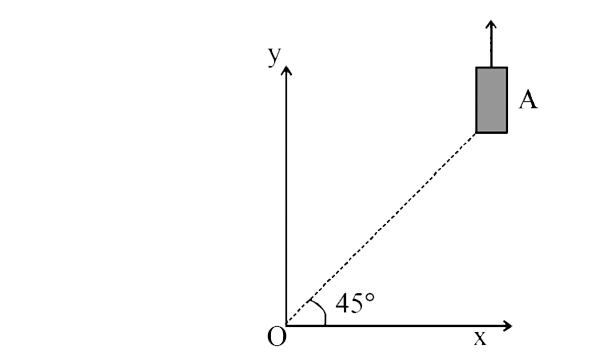If I=∫sin2x(3+4cosx)3dx, then I equals
3cosx+8(3+4cosx)2+C
3+8cosx16(3+4cosx)2+C
3+cosx(3+4cosx)2+C
3−8cosx16(3+4cosx)2+C
The correct Answer is:B
To solve the integral I=∫sin2x(3+4cosx)3dx, we can follow these steps:
Step 1: Rewrite the integrand
We know that sin2x=2sinxcosx. Thus, we can rewrite the integral as:
I=∫2sinxcosx(3+4cosx)3dx
Step 2: Substitution
Let t=3+4cosx. Then, we differentiate t with respect to x:
dt=−4sinxdx⇒sinxdx=−14dt
Now, we can substitute t and sinxdx into the integral:
I=∫2(−14dt)cosxt3
This simplifies to:
I=−12∫cosxt3dt
Step 3: Express cosx in terms of t
From our substitution t=3+4cosx, we can express cosx as:
cosx=t−34
Substituting this back into the integral gives:
I=−12∫t−34t3dt
This simplifies to:
I=−18∫t−3t3dt=−18∫(1t2−3t3)dt
Step 4: Integrate
Now we can integrate term by term:
I=−18(−1t+32t2)+C
This simplifies to:
I=18t−316t2+C
Step 5: Substitute back for t
Recall that t=3+4cosx. Substituting back gives:
I=18(3+4cosx)−316(3+4cosx)2+C
Final Answer
Thus, the final answer for the integral is:
I=18(3+4cosx)−316(3+4cosx)2+C
We know that sin2x=2sinxcosx. Thus, we can rewrite the integral as:
I=∫2sinxcosx(3+4cosx)3dx
Let t=3+4cosx. Then, we differentiate t with respect to x:
dt=−4sinxdx⇒sinxdx=−14dt
Now, we can substitute t and sinxdx into the integral:
I=∫2(−14dt)cosxt3
This simplifies to:
I=−12∫cosxt3dt
From our substitution t=3+4cosx, we can express cosx as:
cosx=t−34
Substituting this back into the integral gives:
I=−12∫t−34t3dt
This simplifies to:
I=−18∫t−3t3dt=−18∫(1t2−3t3)dt
Now we can integrate term by term:
I=−18(−1t+32t2)+C
This simplifies to:
I=18t−316t2+C
Recall that t=3+4cosx. Substituting back gives:
I=18(3+4cosx)−316(3+4cosx)2+C
Thus, the final answer for the integral is:
I=18(3+4cosx)−316(3+4cosx)2+C
Topper's Solved these Questions
- BOOK - CENGAGE ENGLISHCHAPTER - INDEFINITE INTEGRATIONEXERCISE - Exercises (Multiple Correct Answers Type)17videos
INDEFINITE INTEGRATION
- BOOK - CENGAGE ENGLISHCHAPTER - INDEFINITE INTEGRATIONEXERCISE - Exercises (Linked Comprehension Type)17videos
INDEFINITE INTEGRATION
- BOOK - CENGAGE ENGLISHCHAPTER - INDEFINITE INTEGRATIONEXERCISE - CONCEPT APPLICATION EXERCISE 7.915videos
INDEFINITE INTEGRATION
- BOOK - CENGAGE ENGLISHCHAPTER - HYPERBOLAEXERCISE - COMPREHENSION TYPE2videos
HYPERBOLA
- BOOK - CENGAGE ENGLISHCHAPTER - INEQUALITIES AND MODULUSEXERCISE - Single correct Answer21videos
INEQUALITIES AND MODULUS
Similar Questions
IfI=∫sin2x(3+4cosx)3dx,thenIequals (a)3cosx+8(3+4cosx)2+C (b) 3+8cosx16(3+4cosx)2+C (c)3cosx(3+4cosx)2+C (d) 3−8cosx16(3+4cosx)2+C
View Solution∫sin2xcos2x+3cosx+2dx
View Solution∫(sin2x−4e3x)dx
View SolutionIf I=∫dx(a2−b2x2)3/2, then I equals
View SolutionIf I=∫dxx4√a2+x2, then I equals
View SolutionOn a frictionless horizontal surface , assumed to be the x−y plane , a small trolley A is moving along a straight line parallel to the y−axis ( see figure) with a constant velocity of (√3−1)m/s . At a particular instant , when the line OA makes an angle of 45(∘) with the x− axis , a ball is thrown along the surface from the origin O. Its velocity makes an angle ϕ with the x− axis and it hits the trolley .
(a) The motion of the ball is observed from the frame of the trolley . Calculate the angle θ made by the velocity vector of the ball with the x−axis in this frame .
(b) Find the speed of the ball with respect to the surface , if ϕ=(4θ)/(3).
 View Solution
View SolutionLet I=∫cos3x1+sin2xdx, then I is equal to (where c is the constant of integration )
View Solution∫sin2(4x+3)dx
View SolutionIf I=∫π−πsin21+axdx,a>0, then I equals
View SolutionIf In=∫π0sin(2nx)sin2xdx, then the value of In+12 is equal to (n∈I):
View Solution

